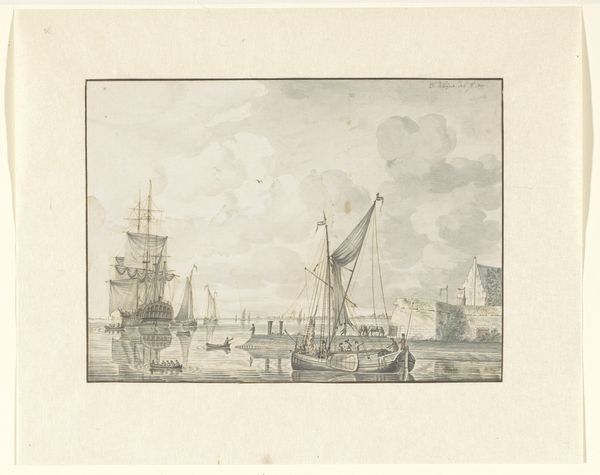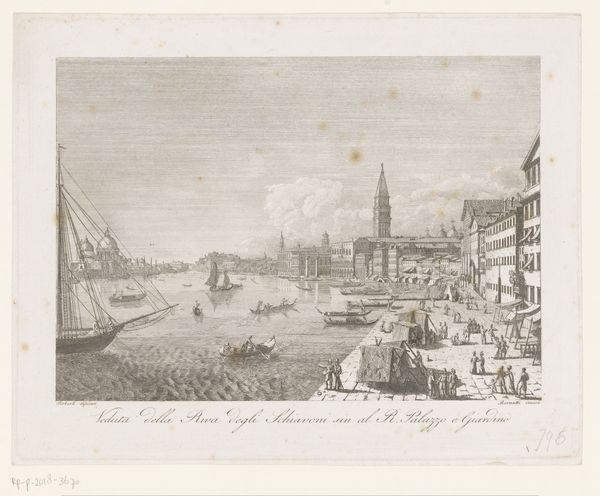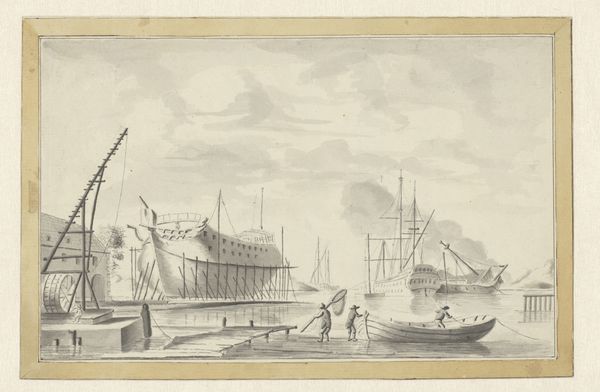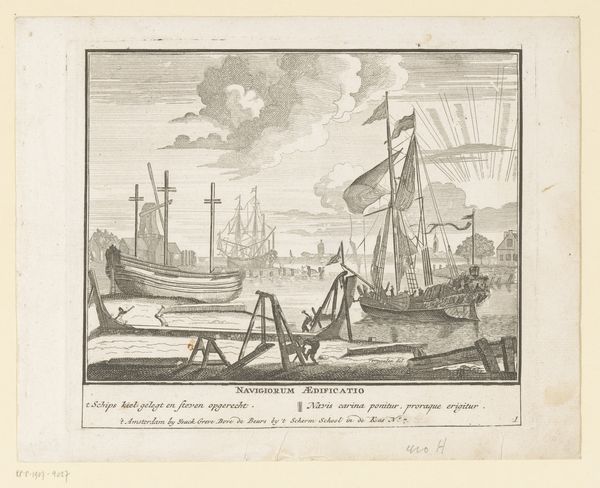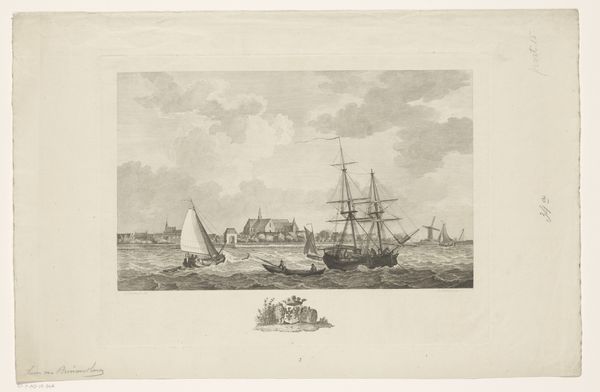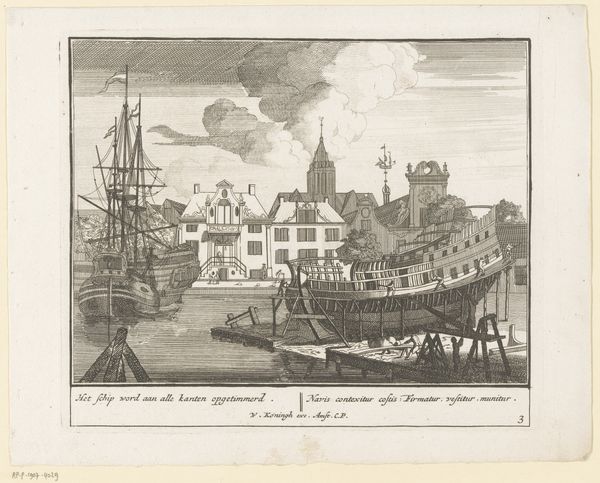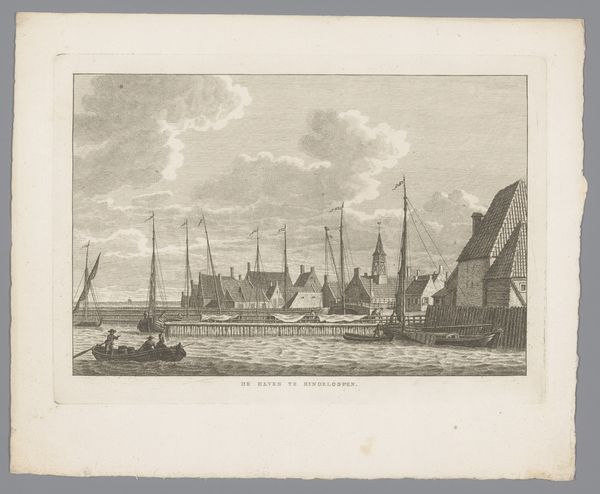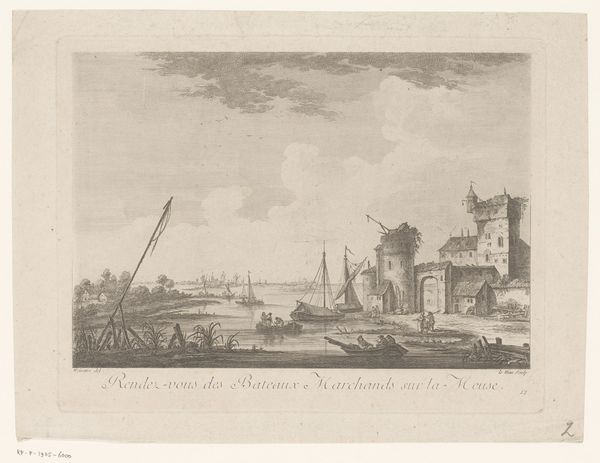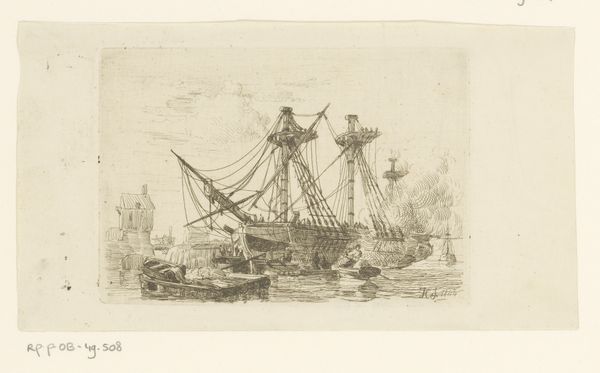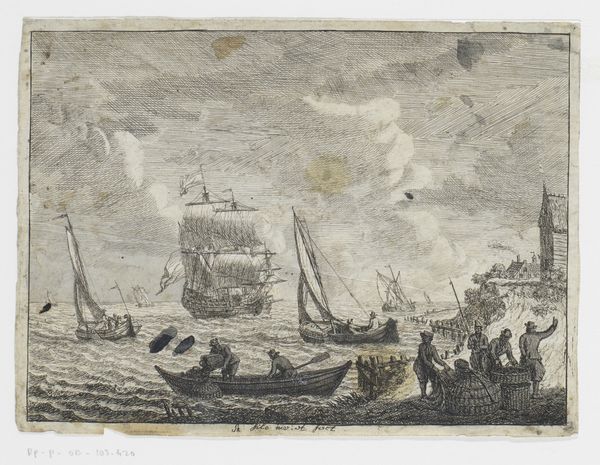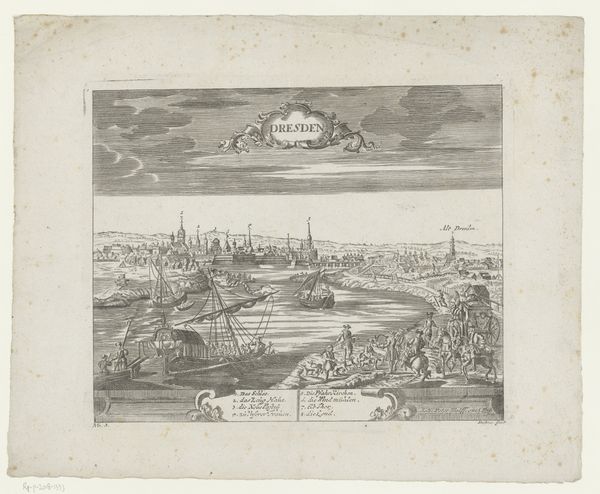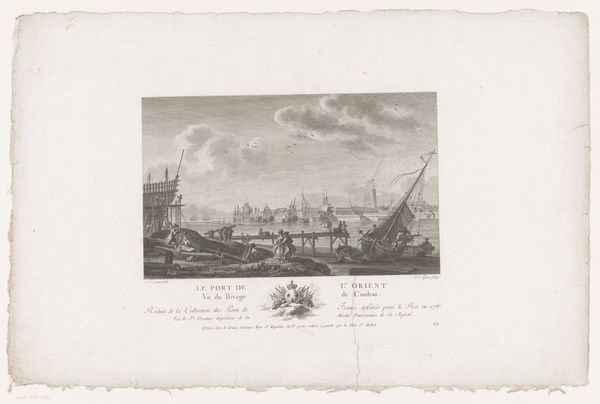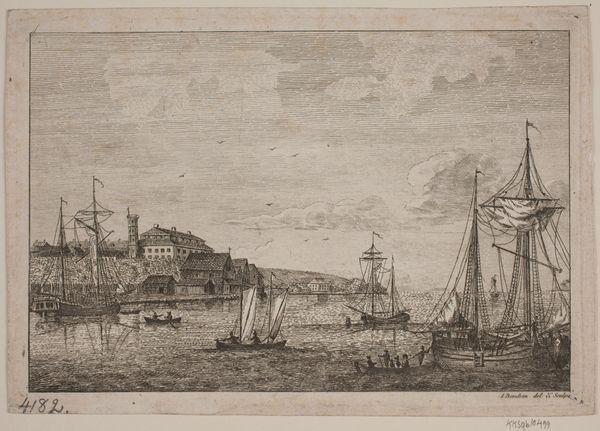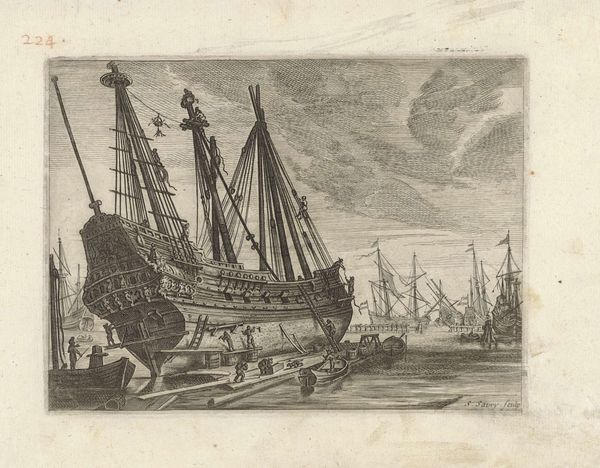
Deels verbrand schip op de VOC-scheepswerf op Oostenburg, 1690 1690 - 1735
0:00
0:00
laurensscherm
Rijksmuseum
print, etching
#
baroque
# print
#
etching
#
landscape
#
etching
#
cityscape
Dimensions: height 191 mm, width 232 mm
Copyright: Rijks Museum: Open Domain
Curator: What strikes me about this etching is its raw portrayal of labor against the backdrop of colonial enterprise. Laurens Scherm’s "Deels verbrand schip op de VOC-scheepswerf op Oostenburg, 1690" presents a shipyard scene teeming with activity, focused around a partially burnt ship from the Dutch East India Company. It’s from sometime between 1690 and 1735 and provides a window into the infrastructural mechanics behind maritime trade. Editor: It feels gritty, doesn’t it? Like you can smell the tar and the woodsmoke just looking at it. The ship looks almost skeletal, picked clean. I’m immediately drawn to the human element though. Curator: Absolutely, the skeletal remains are a striking reminder. But considering the ship as a symbol within the historical context of the VOC, its damaged state raises some important questions. It invites us to think about the human cost—the enslaved labor and extracted resources—upon which these empires were built. Editor: Mmm, and look at the men working on the vessel. Some appear burdened, maybe weary. What's intriguing is this blend of human activity, almost chaotic, against the rigid geometry of the cityscape behind it. The buildings feel detached, almost indifferent. Curator: That tension between individual experience and systemic structure is key. Consider how the artist situates the shipyard not just as a functional space, but as a node in the broader network of colonialism. The details are critical: What are the stories these figures carry? What do they gain or lose in this system? The landscape in this "cityscape," too, whispers secrets of its own transformation. Editor: Makes you wonder about those little boats right in the foreground as well. Are they coming, or going? There's so much left unsaid in these quiet prints, these etchings. The mood hangs in the air between the visible, the partly visible and the barely suggested. A perfect picture about the silent, unseen, unmentioned labour on which empires are built. Curator: Indeed, these images serve as critical artifacts that complicate simplistic narratives of progress and highlight the need for ongoing interrogation of historical power dynamics. Editor: Looking at it, I realize, maybe the incompleteness is the point, what can be visualized vs what's invisible when we’re looking at the past and all of these layers. Anyway, my perspective of shipyards will never be the same again!
Comments
No comments
Be the first to comment and join the conversation on the ultimate creative platform.
